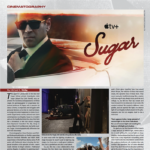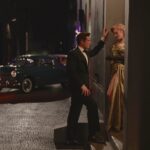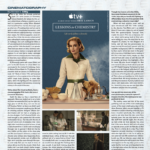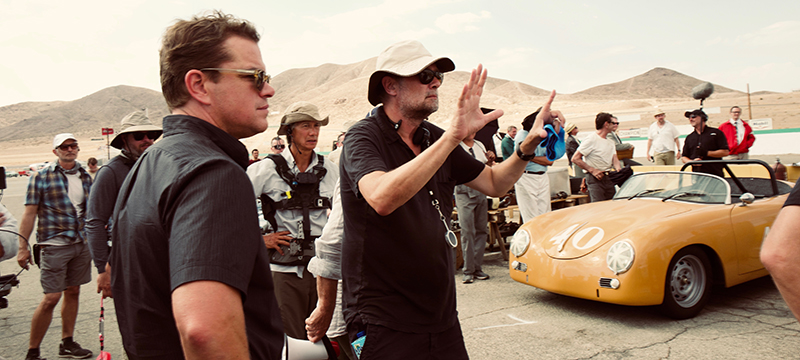
PLSN Talks with DP Phedon Papamichael
Whether it’s 1966’s Grand Prix starring James Garner or, to a lesser extent, Steve McQueen’s groundbreaking quasi-documentary from 1971, Le Mans, a good racing flick is more than just filming the winning car whooshing passed the checkered flag and crossing the finish line.
A new feature film, Ford v Ferrari, directed by James Mangold, seems to capture this esthetic nearly perfectly. In this latest spin on the racecar movie, the plot is as much about the drive for automotive superiority as it is the relationship between an English driver Ken Miles (portrayed by Christian Bale) and hotrod visionary Carroll Shelby (Matt Damon) — two nonconformist navigating the automobile manufacturing business and its standard operating practices.
That isn’t to say there’s a shortage of heart-thumping action in this two-and-half-hour movie marathon. However, the film’s racing sequences, captured as naturally and realistically as possible with minimal CG, appear within the context of a kind of buddy picture shaped by its moments of humor and drama. “Christian and Matt had great chemistry, and really all of the supporting cast did,” says cinematographer Phedon Papamichael, who has worked with Mangold on five feature films, such as Walk the Line and the recent re-imagining of 3:10 to Yuma. “That’s one of Mangold’s strengths: solid and not overly complicated dialogue. In today’s system, it’s rare to have these kinds of movies made at this budget, 90 or so million dollars.”
When Papamichael spoke to PLSN, he referenced the 1983 Philip Kaufman film, The Right Stuff, and perhaps some comparison can be made to the trajectory of the Space Race and NASA’s mission to the moon. In post-WWII America, human beings pushed themselves, their machines and the boundaries of their knowledge to achieve (what was once thought to be) the impossible. Similarly, Ford, the Ugly Americans known more for its assembly lines than artisans, emerged victorious in 1966 after going to war with Ferrari, an Italian brand virtually synonymous with speed and technical sophistication. By June 1969, Ford became a four-time winner at the 24-hour Le Mans; a month later, Neil Armstrong and “Buzz” Aldrin busted out their proverbial Moonwalk.
At the time of our interview, Papamichael was in the Windy City filming The Trial of the Chicago 7, another film focused on a historical, if confusing and dangerous, moment in the turbulent 1960s.
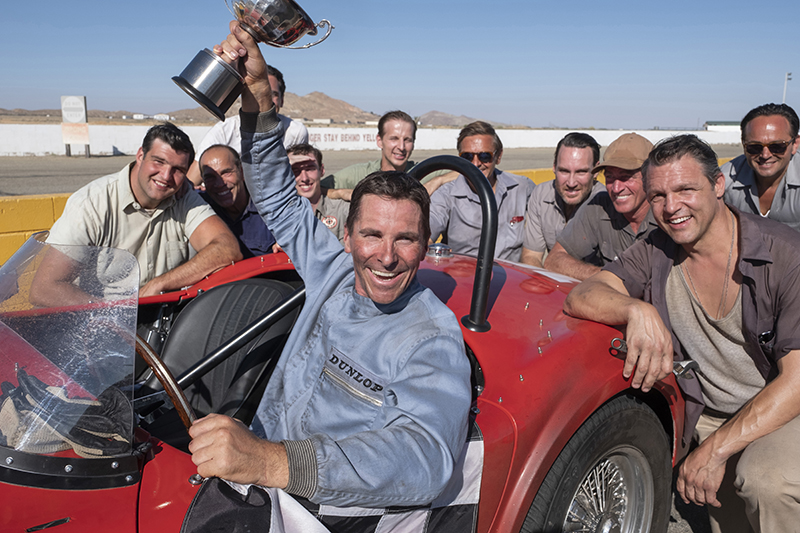
PLSN: Le Mans, the Steve McQueen film, has a documentary feel. Was this something you wanted to accomplish with Ford v Ferrari?

Phedon Papamichael: Steve McQueen shot at the actual Le Mans race for three days, collecting a lot of footage, and then kept a lot of the actual racecar drivers and racecars for shooting. He was obsessed with driving actual race speed, and he did have a fatality (on set). Some of those Ferraris [of that era] cost between $25 and $45 million dollars [now]. Ford GTs were just auctioned off for $13 million. We, on the other hand, had to build them. They were still expensive, but we built over 30 cars. We didn’t shoot at the actual Le Mans, because the track [used in Ford v Ferrari] doesn’t look anything like what it did in the 1960s. It is a country road race, basically, with no safety barriers. Now it’s all high-tech and chicanes. We went to Georgia and found roads that had similar size and width. [We had] to build the Mulsanne Straight and the sharp-right hairpin turn at the end of it, which is featured in the movie. We built all the pits in Agua Dulce, an airstrip north of Los Angeles. It was this incredible set that was probably 300 yards long, populated by the owners boxes and mechanics. The only thing that is CG is the grandstand with all the big crowds. All the pits were extended digitally as well, because in reality they are twice as long or something. We had an amazing production set built by our production designer, François Audouy.
Why Georgia?
We were shooting mostly in California and we had tax rebates, but [California] doesn’t have landscapes that resemble France.
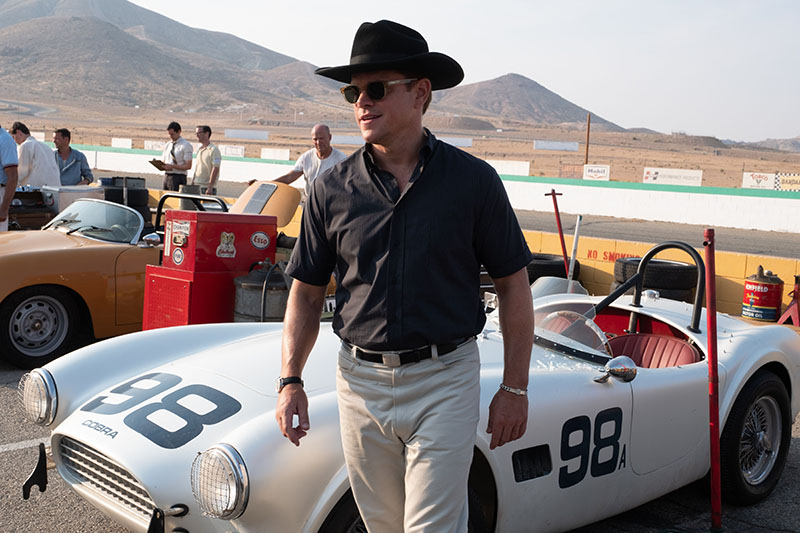
How many locations did you use?
Initially, Carroll Shelby had a little shop in Venice [California] where he was building and selling the Cobras to people like Steve McQueen. Once he got offered a lot of money to help develop the GT40, he and his crew moved into an aircraft hangar at LAX. They would wait for the last plane to leave, at 1 a.m., and use the runways to test cars. We re-created that at Ontario International Airport, east of downtown Los Angeles, and put the iconic airstrip in a few shots to anchor us. Another location was Willow Springs, in the Mojave Desert. One of the final scenes is on the Honda test track, hidden away deep in the Mohave Desert. We shot at the Porsche Experience center and that doubled as Ford’s test track. Second unit was in Georgia. We built the Dunlop Bridge [at Circuit de la Sarthe, the Le Mans track] in Georgia.
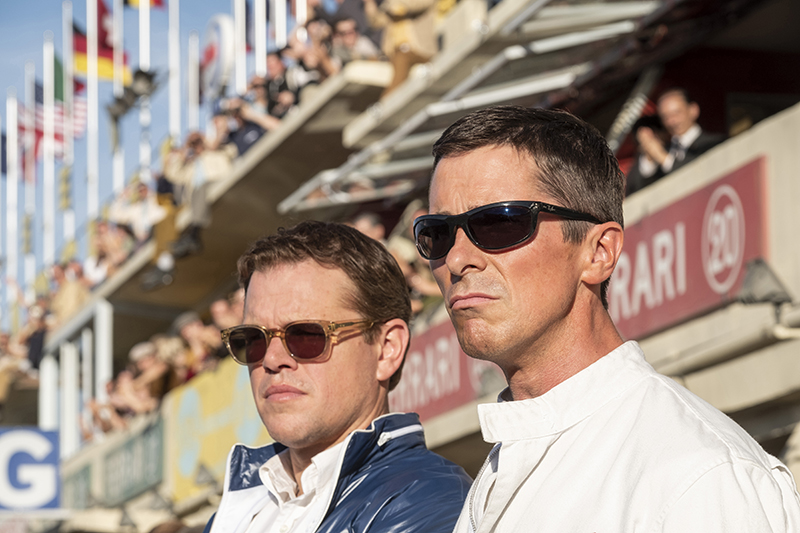
Le Mans is a 24-hour race. How did this impact your filmmaking approach?
It was difficult to balance it all, because stuff was coming back from Georgia and they knew they had to do specific sequences in a specific light, for example, and the night work had to tell a certain story, as did the dawn work. [The Georgia crew] were trying to give us everything in the correct light, based on our timeline, but that’s difficult to do in actuality. They had rain and overcast and hard sun, and they would shoot at eight in the morning and then the movie cuts to a shot from High Noon. I had a lot of balancing to do with the digital intermediate and adjusting contrasts.…
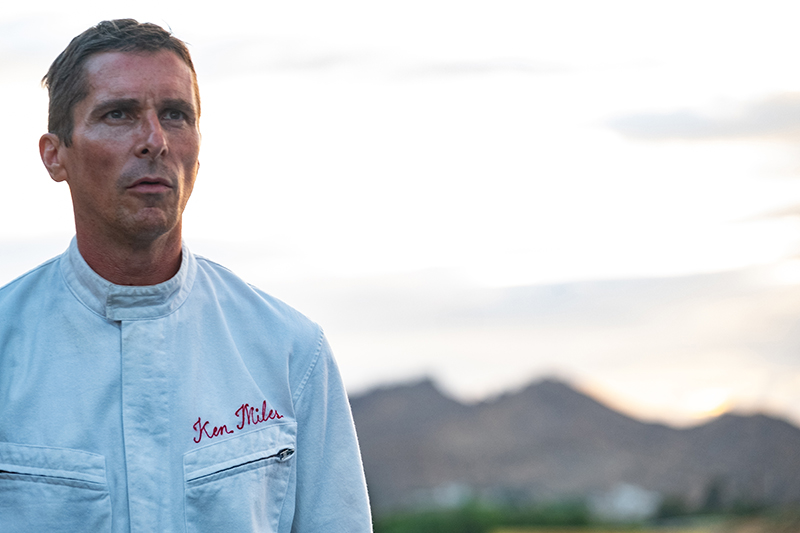
How do you use CG for a film like this and make it look authentic?
A lot of the stunts and effects and cars flying through the air, catapulted car shells and certainly touch ups are [done by the CG department], but most of the effects were done mechanically. We were definitely inspired by the old-school racing movies, but did not restrict ourselves to technology that was available in the 1960s. Grand Prix and Le Mans were done with frontal close-ups. As I started testing various rigs and camera vehicles and tools, I realized that the most effective and best way to get into the protagonist’s head was to do a hard camera mount onto the chassis, feel all the vibrations, and do it with wider-angle lenses. Normally I use vibration isolators, but I wanted actors to experience the full insanity of being in these little boxes going at crazy speeds. Christian Bale is wearing these goggles, and he looks like Lawrence of Arabia taking Aqaba [laughs]. There was very little blue screen compositing going on. We had two days, not even, on a stage in an aircraft hangar for specific close-ups with Christian Bale.
Did you discuss the overall look of Ford v Ferrari with Mangold prior to production?
[Mangold] had Grand Prix running in his office, on a big monitor, on a loop. While we were doing other stuff, he would glance over and say, ‘That’s cool.’ We never watched Le Mans together. I have seen it. I’m kind of a car guy and I did watch a bunch of documentaries. The 24 Hour War is a good one. Mangold, although he works successfully within the studio system, comes from independent films like I do. I started with Roger Corman and did a lot of low-budget movies before I did my first studio picture. I’ve been influenced by Italian neorealism, Westerns, Japanese cinema — Yasujirō Ozu, Akira Kurosawa. All of those things, consciously or unconsciously, influence the decisions you make about how you line up shots and tell a story.
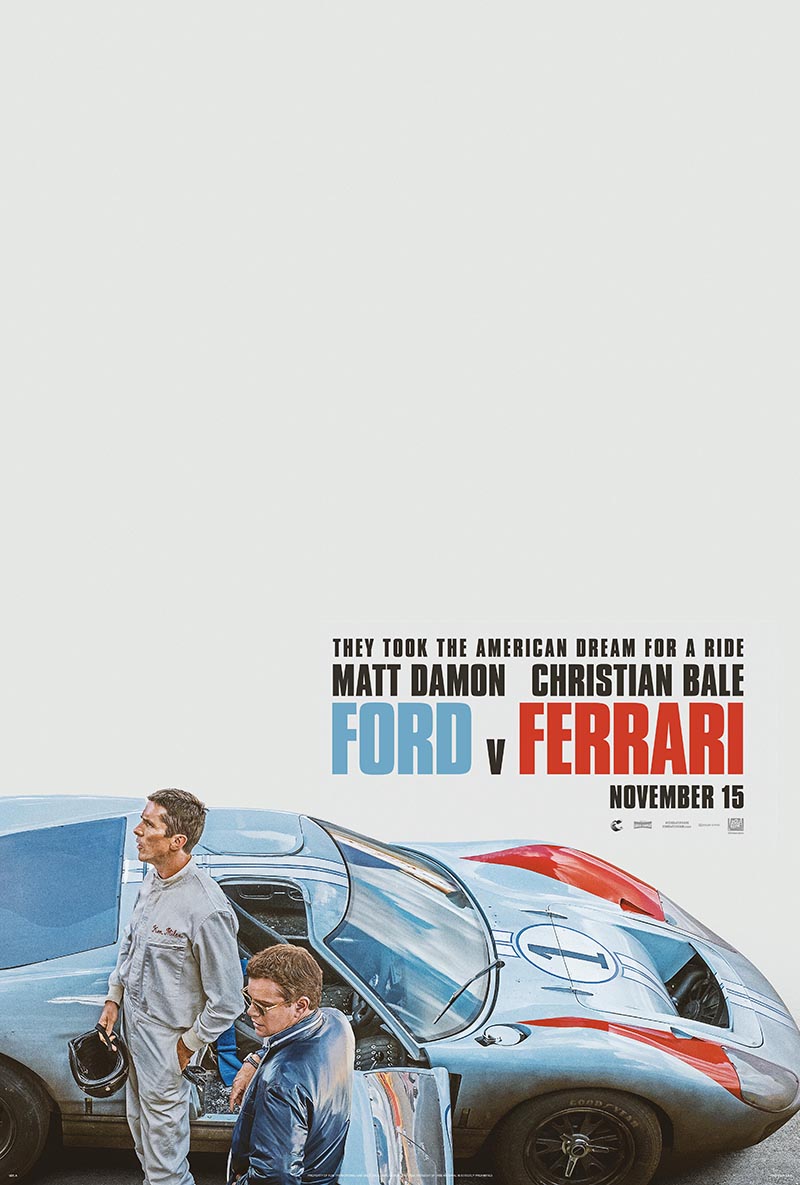
A special lens was fashioned by Dan Sasaki of Panavision to capture the thrill of racing for the Big Screen.
I used these anamorphic lenses that were expanded to fit the large format LF camera. It was a good combo: [Arri] Alexa Mini LF with the expanded anamorphic C series and T series.
Pits were built; you overturned cars. A stagecoach was upended in Mangold’s 3:10 to Yuma, also co-starring Bale. A whole town, or part of one, was constructed for that movie.
We ran out of money to finish the town [laughs]. We decided to have [Russell Crowe and Christian Bale] run through the construction, but the production designer said that the carpentry was not period-accurate. There were booming towns at the time, after all, and it actually turned out to be a very cool visual element.
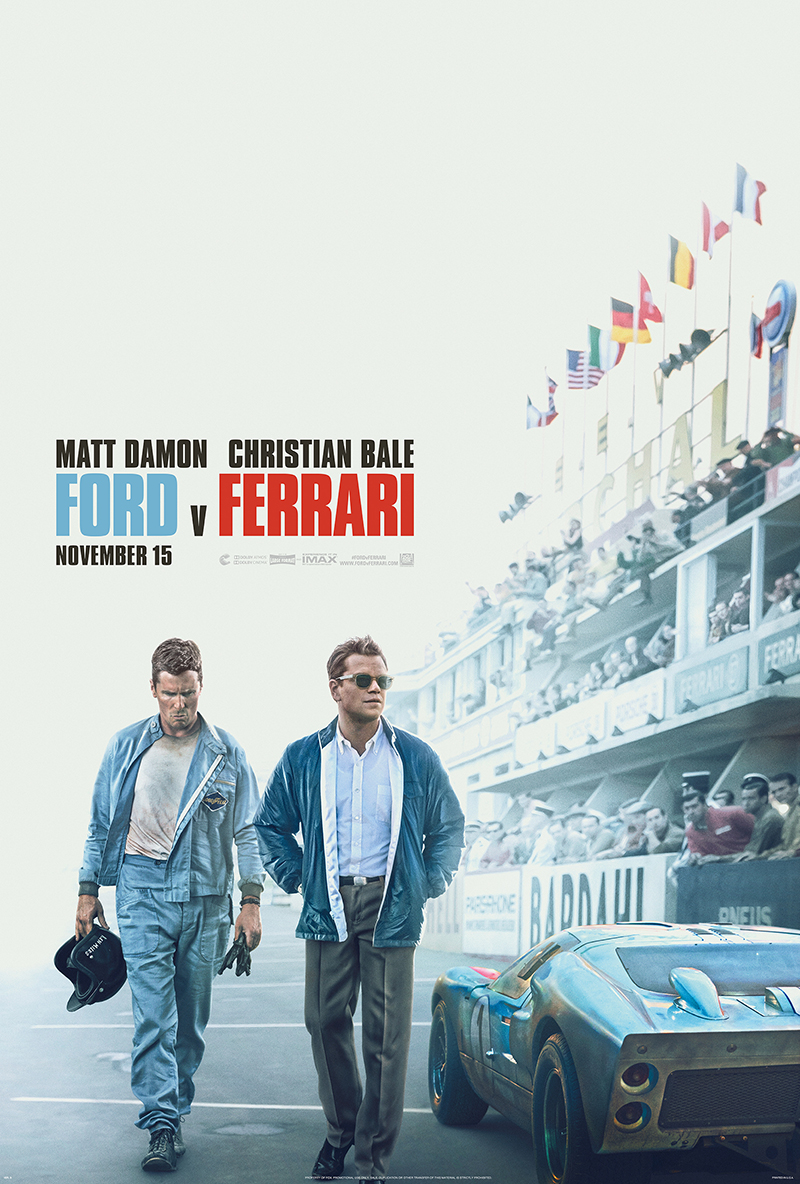
A happy accident…
That’s what filmmaking is all about.
Ford v Ferrari is, partially, about the inner struggle of the main characters.
It is. It’s a movie about friendship and putting your life at risk to pursue what you love. It’s about these underdogs who don’t function well in the system and the corporate structure. It’s kind of like The Right Stuff, where you have the test pilots out in Edwards Air Force Base getting sucked into NASA. They have a hard time dealing with that.
You talked about balancing the lighting. How was this achieved?
I come from the school of natural lighting and embrace what’s given to me. When I use light, it’s to extend the period of that situation or that light. In a way, the night stuff is easy. You can control the night stuff. The hardest to do is day exteriors, especially one scene or sequence that you shoot over a two-week period.
Given all of this, did you feel the need to customize any lighting boxes for the film?
We use a lot of Arri SkyPanels. I did, for the first time, put in one basket, one lift basket, two S360 Arri SkyPanels. I also used these rock ‘n’ roll [moving lights] that I could remotely control and highlight things, change the color, without losing a person up in the basket changing scrims and gels. It’s all LED controlled and running through a DMX dimmer board. It’s very practical, and really speeds you up.
In one scene, Miles talks with his son about “the perfect lap.” There’s a deep glow in the background, but also a light flashing off the markers in the foreground…
Exactly. We knew we wanted to shoot it after sundown, and I really wanted this dusk, magic hour, scene. I knew I had about 20 or 25 minutes with constant changing ambience. [Daylight] was dropping quickly, and I was using all the existing airport lights, landing strip lights, but I couldn’t control those. I started as soon as the sun set with a lot of ND filters [darkening/neutral density filters], and I kept pulling them. We didn’t have time to lay track [for the camera]. We knew they would walk and sit at some point, and so I put a stabilized head on the dollies, so they could just roll on the runway. The second camera was a Steadicam… Luckily we had a large number 8 [sign], which our department had brought, and [Bale says], ‘Out there is the perfect lap. You see it?’ I motivated the light off that big 8, otherwise they would have been completely silhouetted. I could have gone back a second day, but it was very restricted at the airport and we couldn’t have big frames or bounces. It was a big open runway, not that far from us, and we couldn’t put in big lights, because it would either blind the pilots or confuse them… It turned out to be one of the more beautiful sequences in the movie. It was a scramble, and everyone was running, trying to get this done, but in the end, it was quite satisfying.
Ford v Ferrari’s U.S. release is set for Nov. 15, 2019. For more info, go to www.fordvferrari.com.
